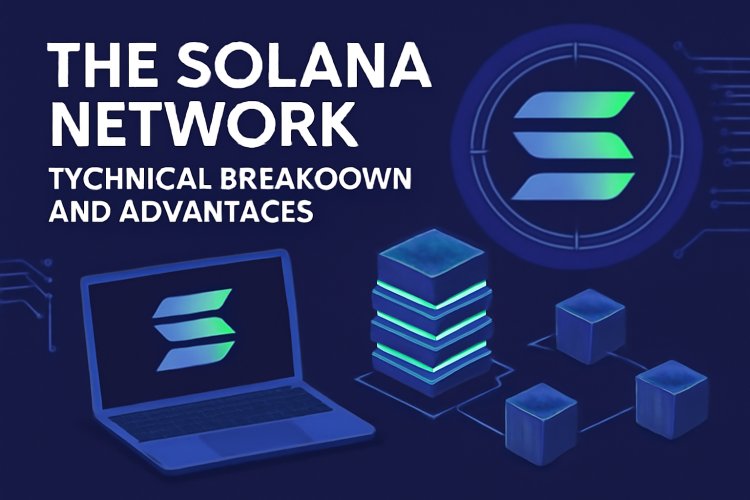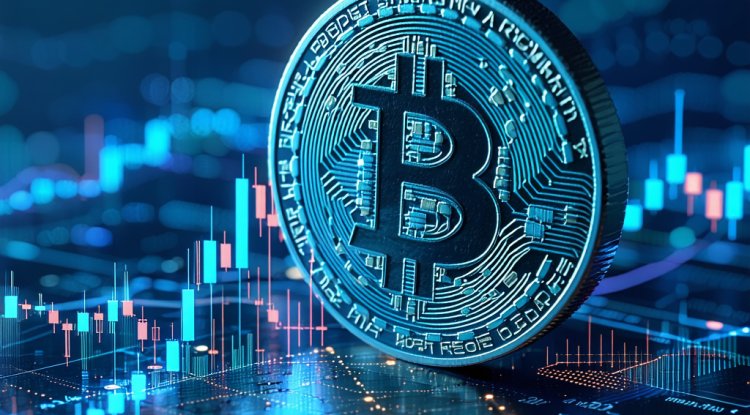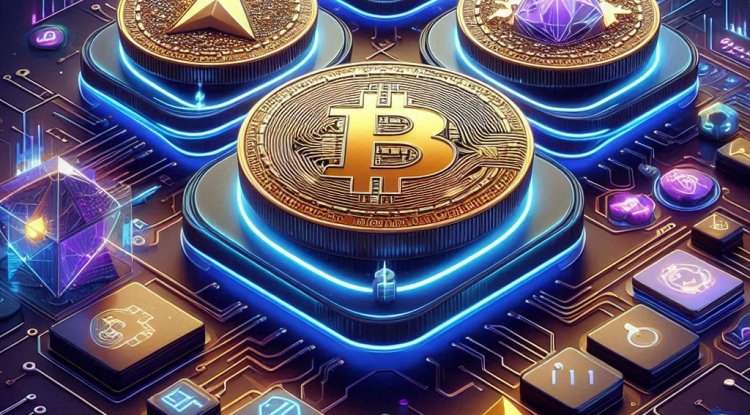The Solana Network: Technical Breakdown and Advantages
Explore the innovative technical architecture of the Solana network, featuring Proof of History, high scalability, low fees, and a developer-friendly ecosystem. Read our in-depth analysis and learn about potential risks and decentralization concerns.

Solana has rapidly ascended the ranks as one of the most talked-about blockchain networks in the cryptocurrency ecosystem. Combining innovative technologies with a developer-friendly framework, Solana aims to revolutionize traditional blockchain constraints of speed, scalability, and user experience. In this detailed article, we dissect the unique technical architecture of Solana, discuss its benefits for developers, and critically evaluate the challenges it faces.
Introduction
Solana is designed to address critical shortcomings in previous blockchain architectures by merging layered innovations in data structure and consensus protocol. With a growing community of developers and an increasing number of projects choosing Solana as their underlying infrastructure, the ecosystem boasts impressive transaction capacities and low fees. This article provides a professional technical breakdown of the Solana network, offering insights into its architecture and evaluating both advantages and potential limitations.
For further reading and latest updates, visit CoinIQ or check out Solana’s official website.
Technical Architecture of Solana
At its core, Solana integrates several pioneering technologies that have garnered significant interest in ensuring high throughput, efficient data processing, and robust network security.
Proof of History (PoH)
One of Solana's primary innovations is Proof of History (PoH), a cryptographic clock designed to create a trusted notion of time between nodes. Instead of relying solely on timestamps or external inputs, PoH generates a historical record that proves that an event has occurred at a specific moment. This method allows the network to encode the passage of time rather than only dealing with the ordering of transactions.
Key Points of PoH:
- Deterministic Timestamping: Each computed hash builds upon the previous one, forming a chain of verifiable historical records.
- Efficient Synchronization: Nodes can compute timestamps independently, reducing the complexity and time overhead associated with consensus.
- High Throughput: By eliminating time-consuming verification steps of block ordering, the network achieves lower latency in transaction processing.
Mathematically, ifis the hash at step, then the recursive relation can be represented as:
This straightforward relation ensures rapid computation while maintaining the integrity and order essential for blockchain operations.
Consensus Mechanism
Solana uses a unique form of Byzantine Fault Tolerance (BFT) combined with a Proof-of-Stake (PoS) mechanism. This hybrid approach benefits from the speed of PoH and the security of PoS, offering:
- Decentralized Validation: Validators are required to stake tokens, which aligns their incentives with the network’s security.
- Reduced Energy Consumption: Compared to traditional Proof-of-Work (PoW) systems, PoS requires significantly less computational power.
- Rapid Finality: The network can achieve near-instant finality, a critical component for applications like decentralized finance (DeFi) and high-frequency trading.
A simplified version of the consensus process is as follows:
- Transaction Broadcast: Users initiate transactions that are timestamped via PoH.
- Validator Selection: Validators, selected by their stake, verify the timestamped transaction and record the block.
- Finality: Once a supermajority of validators agrees, transactions are finalized.
Scalability
Scalability has been an Achilles’ heel of many blockchain networks; however, Solana aims to overcome this with its innovative design:
- Optimized Data Propagation: The use of PoH allows nodes to independently verify transaction ordering, reducing bottlenecks that typically occur in data propagation.
- High Throughput: Solana claims the ability to handle over 50,000 transactions per second (TPS) under optimal conditions, compared to Bitcoin’s 7 TPS and Ethereum’s approximately 30 TPS.
- Efficient Resource Usage: By integrating parallel processing and efficient validator selection, Solana minimizes the latency and maximizes network efficiency.
Consider the following performance comparison in a simplified table:
| Network | Transactions Per Second | |
|---|---|---|
|
1
|
Solana
|
50,000+
|
|
2
|
Ethereum
|
30
|
|
3
|
Bitcoin
|
7
|
The numbers, while theoretical benchmarks, underscore the transformative scalability Solana offers to distributed application ecosystems.
Benefits for Developers
Solana’s architecture and design choices translate into tangible benefits for developers. Its ecosystem is well-positioned for a wide range of applications, from decentralized finance platforms to non-fungible tokens (NFTs) and beyond.
Low Transaction Fees
One of the most attractive features for developers building on Solana is its low transaction fees. By drastically reducing the cost of processing transactions, the network lowers the barrier for user adoption and microtransactions.
- Affordability: Lower fees make it feasible for developers to build applications that rely on frequent, small transactions.
- User Retention: Reduced costs translate to a better user experience, thereby increasing user retention and engagement.
- Innovation: Startups and independent developers benefit from the cost-efficient tools that encourage experimentation and rapid deployment.
High Transaction Speeds
The high throughput of over 50,000 TPS is a game-changer for applications that demand speed and reliability:
- Real-Time DeFi Applications: Instantaneous processing opens up new opportunities for decentralized finance platforms to implement innovations like flash loans and rapid arbitrage.
- Gaming and NFTs: High-speed transactions provide smoother in-app experiences, critical for interactive gaming and NFT trading platforms.
- Global Accessibility: Faster processing means that the network is better suited to handle surges in demand, scaling effectively with global user adoption.
Developer-Friendly Tools
Solana incentivizes developer engagement by offering a suite of tools designed to simplify the process of building and deploying applications:
- Comprehensive SDKs: Robust software development kits (SDKs) and libraries accommodate a variety of programming languages and frameworks.
- Extensive Documentation: Detailed guides, tutorials, and community forums ensure that developers, even beginners, have the resources to start their projects.
- Ecosystem Support: Grants, hackathons, and partnerships provide financial and technical support, nurturing innovation and accelerating the project lifecycle.
An example of a developer-friendly initiative is the Solana Foundation, which regularly sponsors events and challenges aimed at solving real-world problems with blockchain technology. For instance, projects that integrate with the decentralized financial ecosystem benefit from both technical guidance and funding support.
Critical Points and Drawbacks
No technological solution is without its challenges. While Solana offers numerous advantages, potential developers and investors must be aware of its critical points and drawbacks.
Evaluation of Risks
Despite its innovative approach, Solana faces several risks inherent to rapidly evolving blockchain platforms:
- Network Downtime: Past instances of network outages or slowdowns have raised concerns regarding the reliability of the infrastructure.
- Security Vulnerabilities: As the network scales, the complexity increases. This can potentially introduce vulnerabilities if the protocol or smart contracts are not rigorously audited.
- Ecosystem Maturity: While gaining traction, the ecosystem is still maturing compared to older networks like Ethereum or Bitcoin. This may affect the stability and support available for developers.
Understanding these risks is essential for both developers and investors. Risk mitigation strategies—such as diversified deployment practices and robust auditing—are recommended to minimize exposure.
Concerns Related to Decentralization
Decentralization is a cornerstone of blockchain technology. However, Solana has been scrutinized for aspects that may compromise decentralization:
- Validator Concentration: A significant portion of network validation is sometimes confined to a relatively small group of high-stake validators. This centralization could lead to potential collusion or single points of failure.
- Governance Models: The current governance model may not fully democratize decision-making. This raises questions about long-term network evolution and community involvement.
A balanced perspective is necessary: while some centralization can optimize performance, it must not compromise the decentralization ethos that ensures security and resilience.
Stability Issues
The stability of the network is paramount, particularly for high-frequency transactions and enterprise-level applications:
- Software Bugs: Rapid development cycles can occasionally lead to bugs and software glitches that affect network performance.
- Market Volatility: The inherent volatility in cryptocurrency markets can lead to sudden shifts in network usage, influencing transaction speeds and fee structures.
- Infrastructure Overload: As more projects move to Solana, the demand on the network may outpace its capacity to efficiently manage a high load, resulting in potential congestion.
It is important for prospective developers to consider implementing fallback mechanisms and ensuring that their applications can gracefully handle temporary disruptions.
Conclusion
Solana stands out as a beacon of innovation in the blockchain space, blending groundbreaking technologies, such as Proof of History and a hybrid consensus mechanism, with a developer-centric ecosystem. Its technical achievements have enabled remarkable transaction speeds and low fees, presenting compelling opportunities not only for fintech startups and decentralized finance projects but also for gaming, NFTs, and beyond.
However, as with any emerging technology, Solana faces challenges that need to be carefully managed. Issues related to network stability, decentralization, and the evolving nature of the ecosystem underscore the importance of due diligence. As developers continue to experiment and innovate on this platform, Solana's long-term success will largely depend on its ability to balance performance enhancements with robust network security and true decentralization.
For a continuously updated perspective on these technologies, industry insights, and hands-on case studies, following authoritative sources like CoinDesk and CryptoSlate is highly recommended.
Call to Action
Are you ready to explore the potential of the Solana network? If you're looking to build fast, secure, and scalable blockchain applications, join the thriving community of forward-thinking developers. Sign up for our newsletter at CoinIQ to get exclusive insights, detailed guides, and live updates on the latest in crypto technology.
Start your journey with Solana today and be part of the future of decentralized innovation.
What's Your Reaction?





















